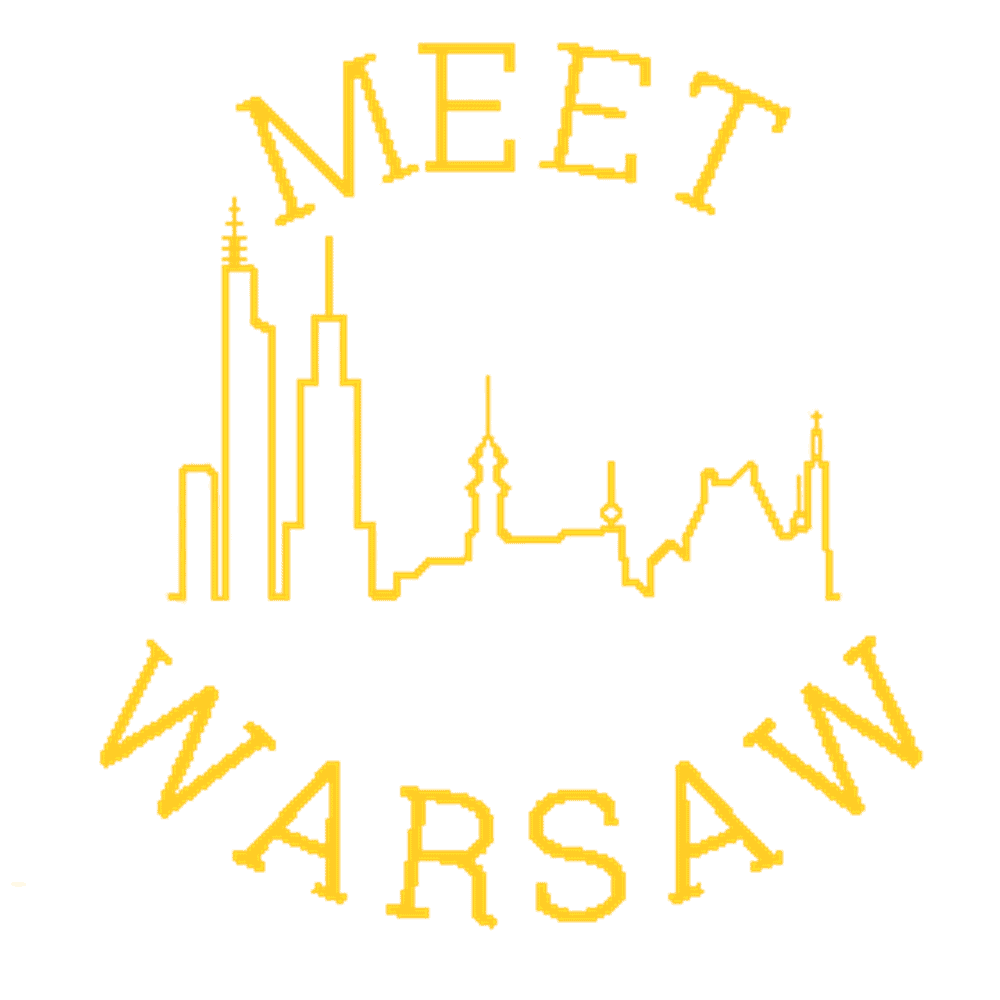If you give Warsaw the time, its vibe and drive become infectious. You start thinking what has happened that this metropolis is so vital and so diverse in many areas like architecture, culture and even cuisine. Warsaw history is so interesting! This city is a real survivor. I think it is one of underrated cities, with a lot of things to see, an impressive cultural scene and an increasingly lively nightlife.
In this post you will read how our historical ups and downs influenced the city and its inhabitants.
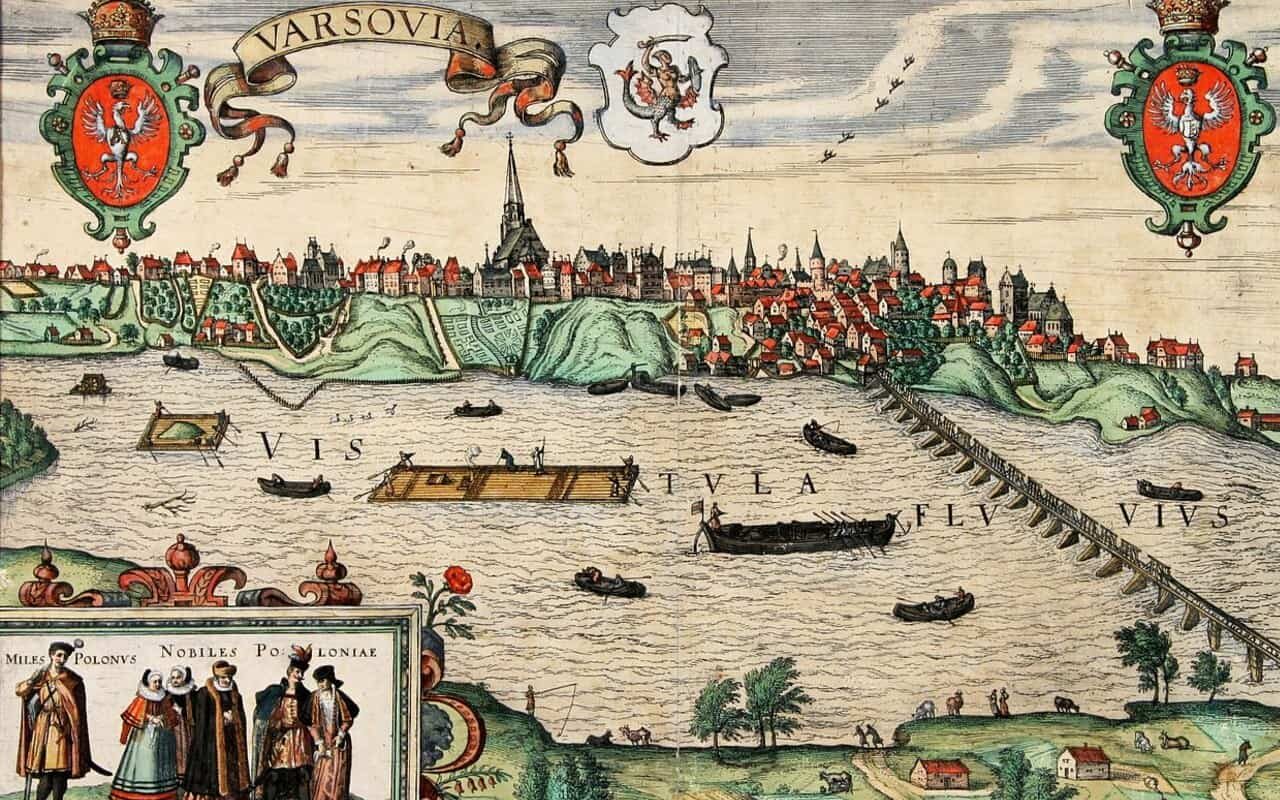
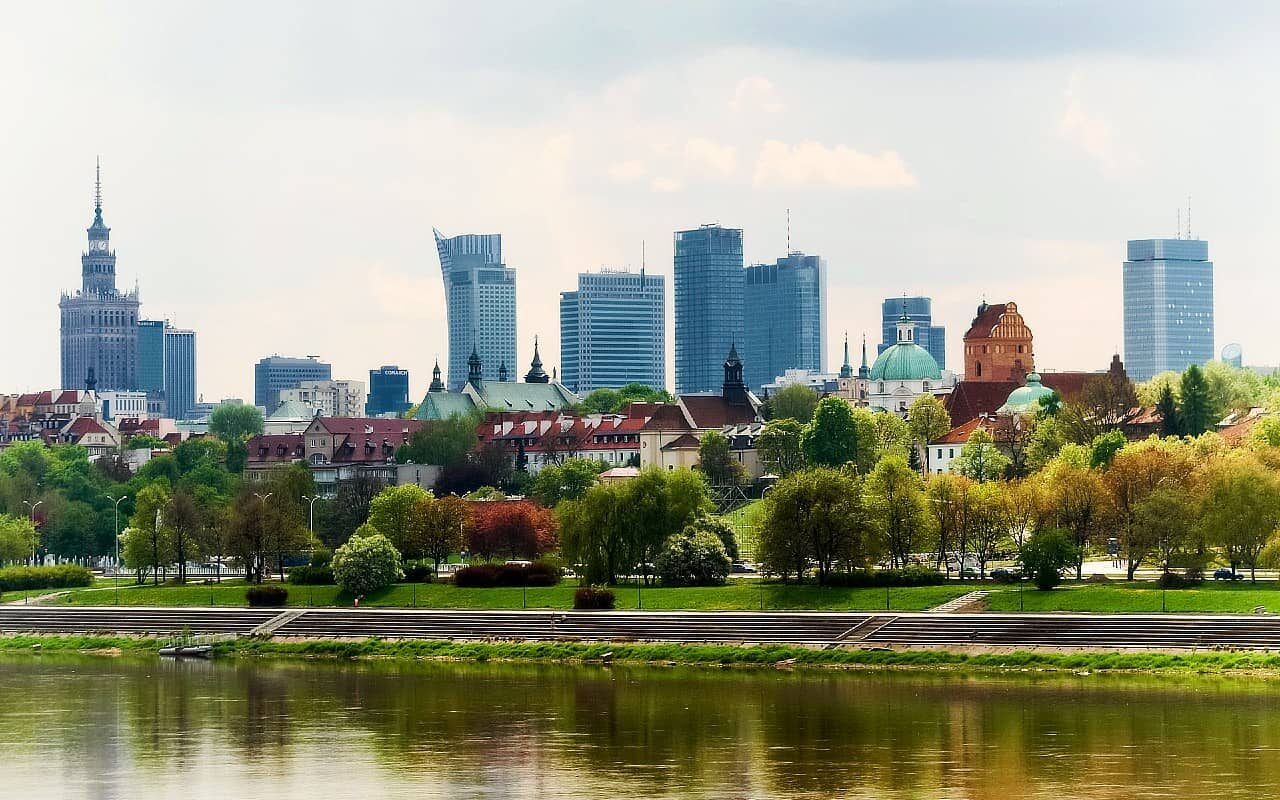
Warsaw history - beginnings
Two hundred years before foundation of Jamestown and writing Macbeth, Warsaw was a small town with a brick stronghold, a parish church and walls. We don’t know exactly when it was established, but we are sure it’s not the oldest Polish city. It had a great location – on the escarpment close to one of biggest rivers called Vistula.

The town was the seat of Dukes of Masovia (in that time many parts of current Polish country was ruled by independent Polish dukes). In other words, it was the center for local inhabitants as well as a good place for resting after crossing the river. When the last Duke died without any heir in the beginning of 16th century, Warsaw was incorporated into the Polish crown and became one of the royal cities. It was connected with many changes and adapting a former Duke’s stronghold, called a castle, for a king needs. But the main Polish kings residence was still Cracow, laid south of Warsaw.
First attribute - location
Poland has expended its territory. That’s why Polish deputies decided to have meetings somewhere in the middle of the boosting country. And it was Warsaw which was their choice. Firstly because it was the town in the middle of Poland. Secondly it had a good crossing through the river. Further advantages were an infrastructure a big hall in the castle for meetings and many city houses, which could host deputies. Above all this decision had a big impact on Warsaw. Firstly – the city had to remodel its roads, secondly – build the first fixed river bridge (look at the panoramic view from 16th century above). But on the other hand deputies made a lot of mess all around the city. During their gatherings in the fields around the city they destroyed crops, which were the main source of living for city residents.
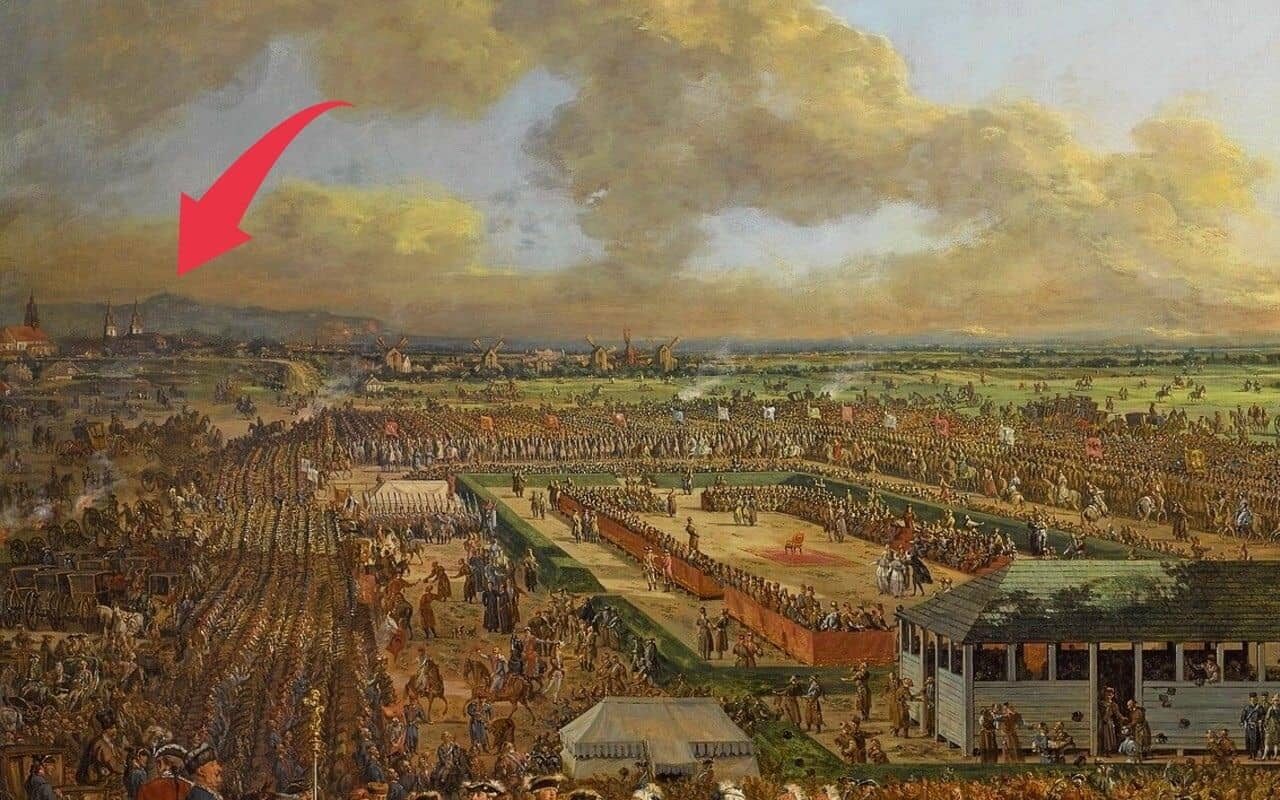
Being the meeting place of Polish Parliament Warsaw starting to be recognizable in Poland and all over Europe
Second attribute – the castle and a fresh air
As I wrote before the main Polish metropolis in 16th century was Cracow. There were king’s castle Wawel, the cathedral where Polish kings were crowned and famous Jagiellonian University. Everything changed after a huge fire in the Royal Castle Wawel. We still don’t know what happened there. Some people said that the king had made some chemical experiments and it had caused a fire. To sum up king had a problem where to live together with his big court. And Warsaw was chosen, this time not only because of location, but also because of pretty large castle (the castle had to be enlarged for the king, but this is another story). Some malicious critics say that the king chose Warsaw for its fresh, rural air.
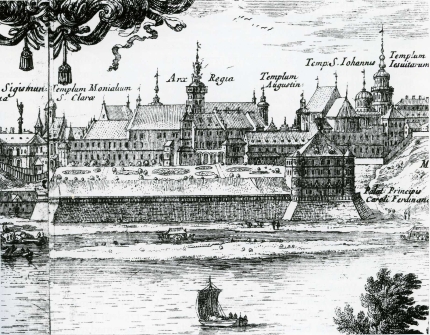
The presence of the king and the court in the city caused many relocations, mainly among noble families – everybody wanted to live in the same city as the king or at least had their own palace here. Warsaw was growing. It resulted in more people, more buildings, more roads, more trade and city prosperity.
First storm or the Swedish in Warsaw
In the middle of 17th century Poland entangled in a war with Sweden. Many damages were made as during every war. In other words many buildings were destroyed, among them the Royal Castle. Warsaw was completely looted. Swedish troops took every precious painting, sculpture or stone ornament (today you can admire Polish works of art in museums in Sweden). Many of them were sent to Sweden by Vistula river. It was so savage that Polish historians called this time the Swedish Deluge.
Warsaw had to be rebuilt and its prosperity had to be restored.
Modern city in the 18th century
In the time of the American Revolutionary War, creation of Constitution of the United States and inventing the steam engine by James Watt, Warsaw flourished again. At that time our king was Stanislaw August Poniatowski. He was a very well educated person, knew a few languages and had a great taste of art. His big love was Warsaw and specially the Lazienki Park. Therefore, he introduced a new layout of the city similar to the famous city of Paris (e.g. by creating an interconnected network of five star-shaped squares). Most importantly he launched a new architectonic style – classical (calm, orderly and reminiscent of antiquity; a real respite after the baroque splendor). Warsaw was one of the first examples of this style in Poland – and you can still admire its beauty e.g. in the Lazienki Park
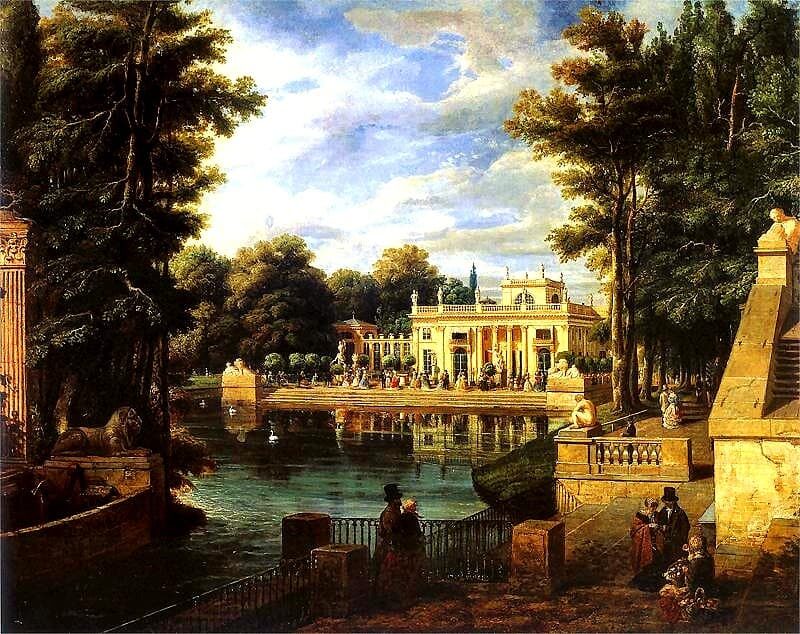
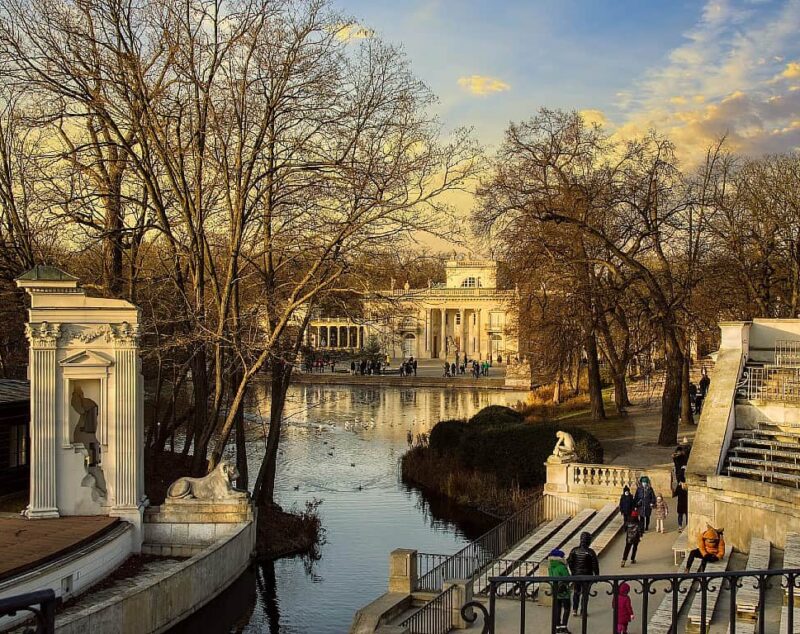
Second storm or Russian in Warsaw
In the 18th century Poland was becoming weaker and increasingly dependent on our large neighbour – Russia. It resulted in the division of the country between Russia, Austria and Prussia. A very difficult for Poles time began – resulting in disappearance from European map. It lasted more than 100 years. After many arrangements, Warsaw became a part of Russia and again our precious treasures – among them many works of art – were taken away.
Russians ruled with an iron fist. City became a provintional town. There were many repressions. Firstly, learning about Polish history was forbidden. Secondly, newspapers and shops signboards were edited in Russian. Thirdly, children had to learn Russian and in Russian at schools. In addition, our governor was Russian and a lot of Orthodox churches were built. Above all Polish patriots were arrested and murdered or sent to a very cold Russian area called Siberia. Saying anything wrong about or against tsar and Russia was strictly forbidden.
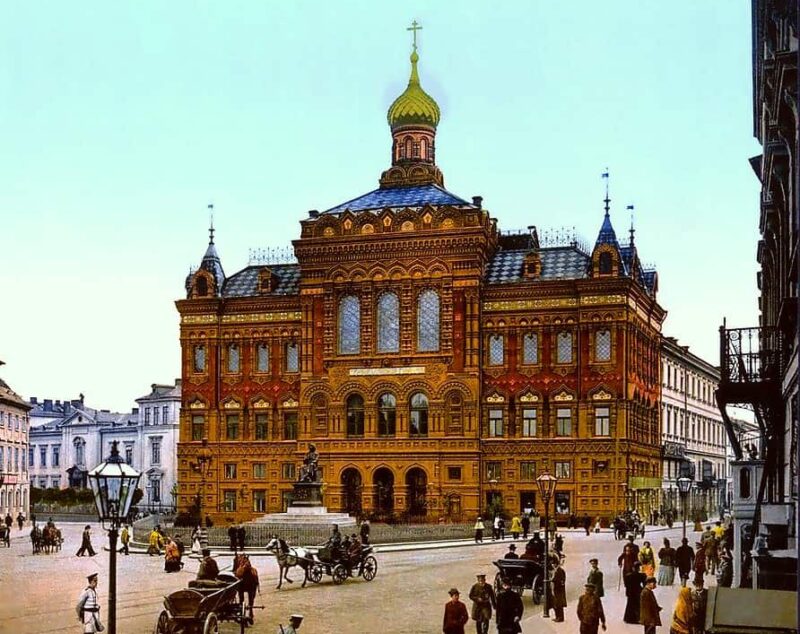
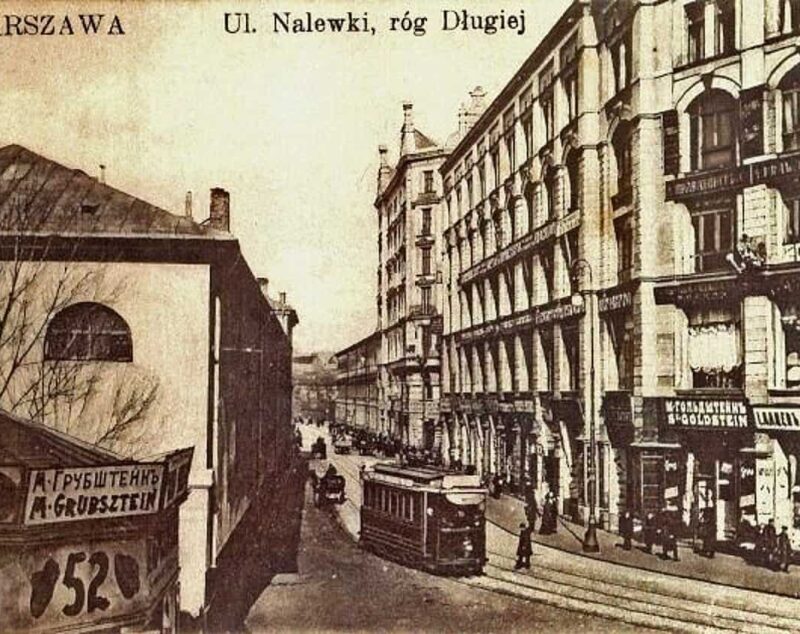
But in general Russians needed Warsaw, because of its convenient location near Western Europe. That is why they built here a railway (with three stations and two bridges over the river), which connected a huge Russia with Vienna and Paris. It was a great thing for Warsaw industry – our products could be easily distributed all over Europe. There is one more object which was made by Russians – the filter station with sewer system. Thanks to that, water in the city became cleaner and more accessible. And amazingly, this system is still operating (look at the guided book).
End of the 19th century and beginning of the 20th century was also a boom in the construction of Warsaw tenements, which reached the sky-high heights of eight to nine floors.
First World War or the Germans in Warsaw for the first time
At the beginning of WWI Warsaw was bombed by Germans airships. Then retreating Russian troops blown our bridges, burned railway stations and destroyed factories with their equipment. In the end the Germans took control over the city in 1915. The Germans tried to convince the Poles to themselves. They gave a permission for the removal of Russian inscriptions, the renaming of streets and the enlargement of city boundaries. The area of the city has increased to 11,5 thousand hectares (approx.44 square miles) – which is similar to Belfast or Cambridge nowadays.
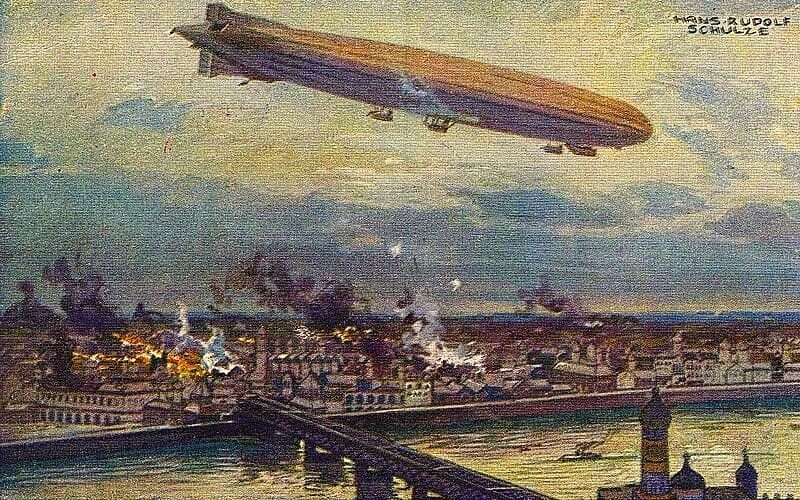
It was of course the war time, so many valuable products were requisitioned for war needs. Varsovians having problems with food and money for living, started to migrate to surrounding villages. The population decreased.
Rebirth – a difficult new beginning
Poland regained its independence after WWI and Warsaw has been announced the capital. But creation of a new country after over 100 years of slavery wasn’t so simple. In the 1920s Poland tried to establish its east border and the only option was the war, this time with Bolshevik Soviets. The Soviets army was only 20 km from Warsaw. There was a massive battle in August 1920 (read more HERE), where in lack of regular Polish troops, many volunteers fought. Among them pupils and students from Warsaw. A lot of them died, but Soviets didn’t reach the city.
In the beginning of Polish independence, Warsaw was badly destroyed after the war, had no own works of art and many young citizens perished in the war.
Paris of the north
After very difficult period, Warsaw flourished in the light of freedom. Many investments (eg. public buildings, housing estates, roads, schools, trams and buses network, phones line, radio stations) made Warsaw a very attractive city. In other words you could find work here. That is why population of the city increased and just before WWII accounted for 1.3 million people (similar to Dallas nowadays).
Not only beautiful facades of buildings made Warsaw comparable to Paris but also numerous cinemas, theaters, restaurants with live music and cabarets. Night live was very intensive what was highlighted by the light of beautiful neons in the city.
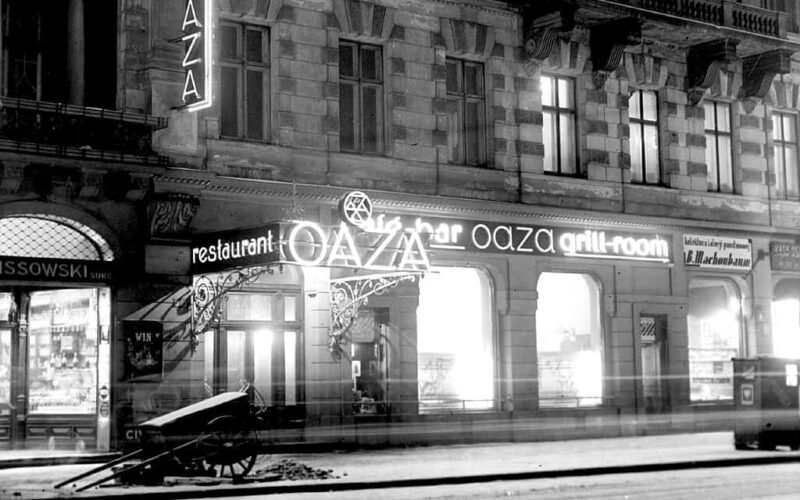
Warsaw became a capital of movies – majority of prewar Polish films were taken here. One of world famous films is ’The Dybbuk’ made in Yiddish. Movie stars were icons of fashion and style.
The city was also a multicultural center. One third of city population was Jewish (about 380 thousands) and many of them were orthodox Jews, so seeing a Jew in a traditional Jewish clothing was quite normal. But there were also other nationalities in the city and we had consequently followers of different religions and customs. The most popular were Roman-Catholics, but there were also Jewish, Lutherans, Calvinists and Orthodox.
Second World War or the Germans for the second time
Warsaw was in war since the morning of 1st September 1939. First Nazi’s bombing touched a few housing estates and the city center. After that a regular siege began. The Nazi troops tried to capture Warsaw throughout September, but thanks to the fierce defense of the inhabitants, it was impossible. The capitulation of the city took place only because of lack of water and food on 28th September. The Nazi entered the city and five years of occupation began.
Watch a film below, made by an American journalist Julien Bryan. He was in Warsaw during the siege and fortunatelly took away from occupied Poland hundreds of pictures and films. Bryan said among others: ’Poles, if the Spartans had revived and saw your heroism, this brave and courageous nation would have bowed their heads down in front of you.’
Germans looted a lot of great works of art (again) and destroyed very important things for our identity and history – such as old books and documents. A terrible terror came. Most frightening of all were the arrests of ordinary people in the streets. In general, Poles were an inferior nation for Germans. Firstly, some districts were closed for Poles and some trams were only for Germans. Secondly, children could learn only in a primary school and afterwards in a vocational school. Universities were closed. In addition every adult person (above 18) had to work and had a special ID document. People didn’t have enough food and they starved from time to time.
Ghetto – an area to Jews – was located in the middle of Warsaw. This part was closed to no-Jews, walled by 2 meters high walls and guarded by Nazi soldiers. Till 1943 most people from ghetto were transported to death camps (mainly to Treblinka) and murdered there.
WWII Warsaw rebels
The city rebelled against Germans twice. First time – in 1943 (the Ghetto Uprising) and second time – in 1944 (the Warsaw Uprising). However I’ ve noticed that for no-Poles this first uprising is better known.
The Ghetto Uprising broke out 19th April 1943. Jews began a fight, doomed in advance to failure, to have an opportunity to die with weapons in their hands. After one month the fighters were defeated and the ghetto was razed to the ground.
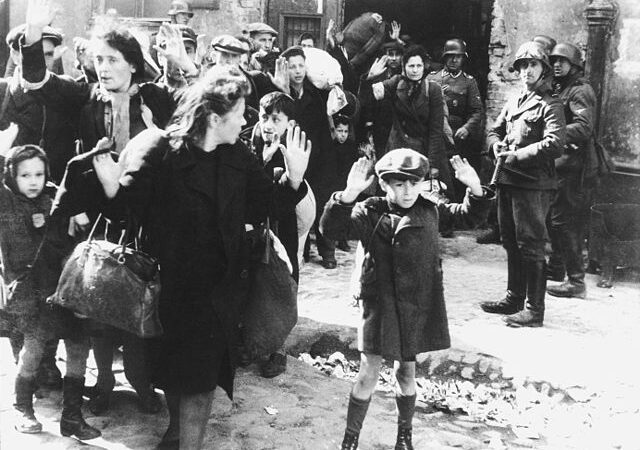
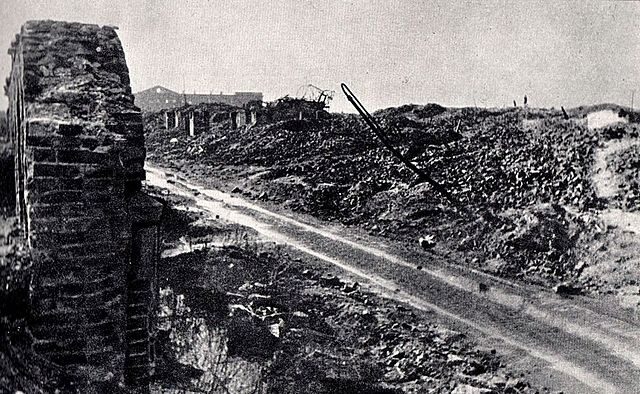
The second rebel is known as the Warsaw Uprising and was the most tragic event in the whole Warsaw history. It started on 1st of August 1944 and uprisers were defeated after 63 days of permanent fight. Nazis had regular troops, more guns, tanks and aircraft. During Uprising about 200 thousand Varsavians were killed. Those who survived were exiled and the main part of the city was destroyed. It was then when many buildings, laying on the left-bank of the river, were blown up for purpose. The Prague district on the right bank of the river was the one which survived.
Watch an official trailer of an amazing film. It is made entirely from documentary materials taken during Uprising! The film is coloured (originals are white and black) and audio reconstruction is made.
Warsaw history after the WWII
Warsaw ended its participation in the war in January 1945, when the Soviet army entered to the dead city. It was the sea of rubble. Almost ¾ of the city was destroyed. 800 thousand inhabitants were murdered among them Jews (compare that the total military casualties for US forces in WWII was 400 thousand). The city was looted. The only part of the city which was still alive, was the right bank of the river (the Prague district). First inhabitants started to come back to the city from the middle of January 1945. Living in Warsaw was very difficult that time. Above all lack of houses, food and water. No medicines or other medical help. Many mined areas made walking through the city very dangerous. Graves everywhere and tonnes of rubble were so depressing. The most tragic of all was uncertainty about the fate of the loved ones.
Raising from ashes like a phoenix
Many didn’t believe that so damaged city could be rebuilt. There were many ideas to remove the capital to another city. Warsaw won again by its location and cultural and historical aspects, as well as the determination of inhabitants.
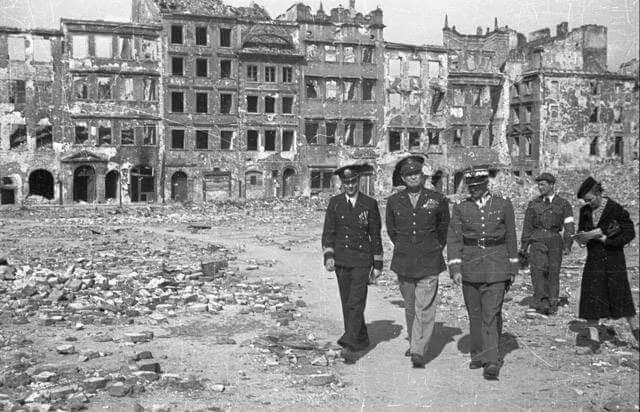
General Dwight 'Ike’ Eisenhower during his travel to Warsaw said, paraphrasing, that Warsaw was more destroyed than anything he had ever seen. He also said that he wanted every American soldier to see it.
Our government – already under Soviet Union influence – decided to rebuild Warsaw. There was a common slogan: ‘All Poles are rebuilding their capital city’. And so they did. Many people came all around the country to work here, as well as many bricks and building materials were transported to Warsaw.
The capital was raising, but the new communist order was forcing changes in the appearance of the city. Many beautiful remnants of prewar city was destroyed and forbidden to rebuild. Instead of that, new buildings appeared, but in a new socialist realist style (the best example is the Palace of Culture and Science) and a new city layout.
Warsaw came alive once again.
Watch an interview with Henry N. Cobb, who passed away in 2020. He was an American architect. During his study-tour in Poland in 1947, about the post-war reconstruction, he took many colourful photos. They were showed in Warsaw in 2013 for the first time.
Warsaw history during time of communism
Forty years of communism was first of all the time for recovering after war wounds. The population of pre-war city was reached in 1970s. The reconstruction of the city was finished with rebuilding the Royal Castle in 1980s. By the way – the strikingly rebuilding of the Old Town and the Royal Castle was rewarded in 1980, when the entire complex has been placed on the UNESCO World Heritage List. New city became the goal for travels of Poles. One of the most common places to visit was the first Polish escalator, built near the Old Town.
Secondly in was time of building many dull and grey house estates, mainly with ten-floor blocks of flats. I used to live in one of them: lots of concrete, oil-painted walls, 49-square meters, three rooms. There was the courtyard in front of the block with a sandpit for children and a carpet stand, where children did flips. Carpet stands in Polish called TRZEPAK were a main center of social life then.
Warsaw was the capital, so many important places were here and among them the headquarter of Communist Party – the monument building in the center which even today is looked at with respect.
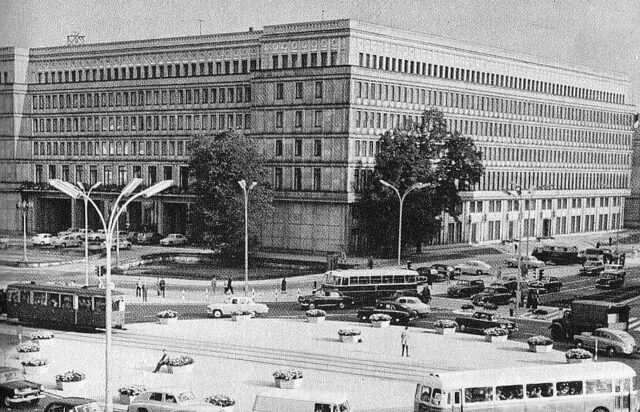
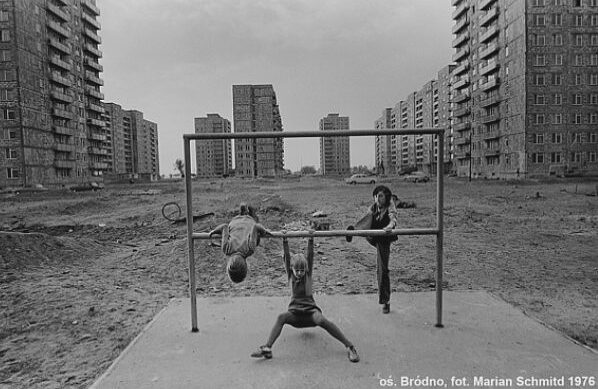
I remember very friendly people that time, who shared with each other their time and abilities (and even dishes). Children had social contacts on a very high level. There was no internet and smartphones and TV was very poor, so they were forced to play with each other. Going ‘on the courtyard’ after school was normal. Unfortunately, today many games on a fresh air are forgotten.
The collapse of communism
It was late 1980s when communism stopped to be the main and the only one system of ruling in Poland. After a free election in 1989 we slowly became a democratic society. The capital was the first place to be changed.
Do you know that our first sign of freedom was a hotel? The first, western skyscraper was Marriott hotel built in the center near the Central Railway Station. It is still a hotel, but its outfit looks a bit old fashion today.
The first McDonald’s in Poland opened in Warsaw in June 1992 (I remember that!) in the very center. The construction cost was one million dollars and on the opening day a world record was set for the number of transactions – 13 300.
Warsaw started to be a new, western city.
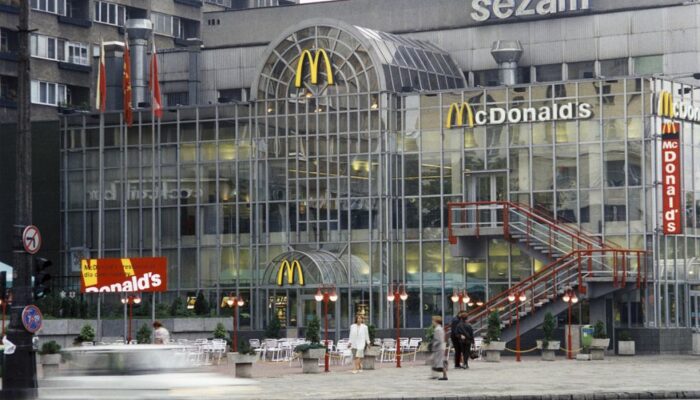
Warsaw history today
If you have an image of Warsaw as a dull concrete jungle with Soviet-era housing with a little appeal, you are simply mistaken.
Visit the city and meet an European metropolis, with fresh green, many culture and really amazing remnants of complicated history.
